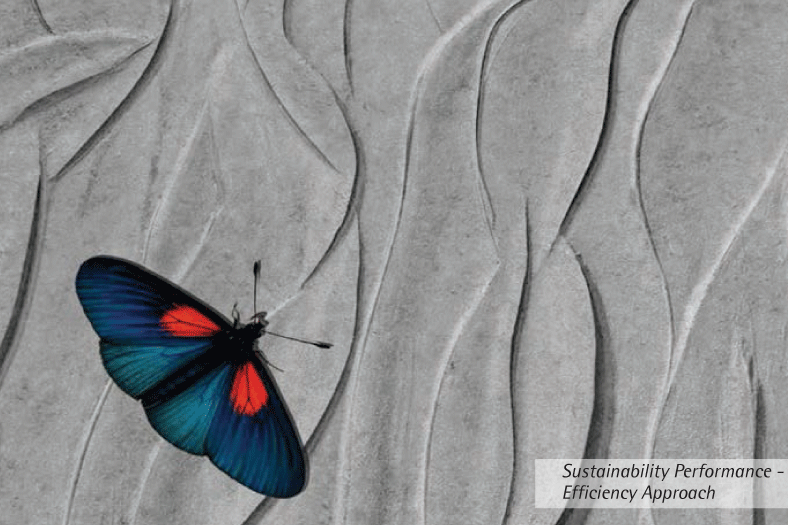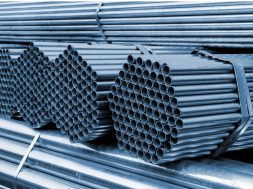Concrete admixtures for sustainable structures

Concrete admixtures can improve the sustainability of concrete in many different ways. Firstly, admixtures can improve the quality and performance of concrete significantly, which, in return, extends its service life. The addition of special admixtures, such as stabilising or water reducing admixtures also enables the use of alternative and recycled aggregates, for the production of good quality concrete. Finally, in many cases the energy required to produce certain cement or concrete mixes will be positively impacted with the use of admixtures. One example is the addition of water reducing and accelerating admixtures to obtain high early strengths in precast concrete to greatly reduced or even completely replaced external heating of elements.
Saving resources and reducing waste in concrete production
Concrete is one of the most versatile and durable construction materials known to man, making it the most widely used construction material in the world. Given the high demand for concrete, its sustainable production and application is an issue of increasing importance for the construction industry and regulators worldwide. Old concrete is being recycled more often. The environment benefits are obvious – re-using existing materials reduces extraction of new aggregates and the pollution caused by transporting waste to landfill sites is reduced.
Admixtures for quality concrete made with recycled aggregates
Recycled aggregates are permitted in a wide range of construction applications and must comply with the requirements of the relevant specification. Sika Admixtures allow the use of recycled concrete as an aggregate in concrete production, so that concrete of good quality and workability can be produced.
Admixtures for on-site recycling of excavated material
An exemplary implementation of on-site recycling was realised during the construction of the new sports stadium in Zurich. The big challenge was the production of concrete with a constant quality using aggregates produced from material excavated on the construction site. This was only possible with a continuous adjustment of the concrete formulation and Sika’s admixture know-how.
Life cycle assessment for concrete admixtures
Megatrends are identified which will also change the needs for building materials as concrete.
The selected megatrends are: energy and resource efficiency, climate change, water scarcity, rising need for efficient infrastructure and rising need for hazard-free and safe products.
Life Cycle Assessment (LCA) provides a method to quantify and evaluate potential environmental impacts throughout a product’s life cycle from raw material purchase through production, use, end-of-life treatment, recycling to final disposal, commonly called cradle to grave.
For concrete admixtures four impact categories and resource indicators below are considered to be the most relevant:
- Cumulative Energy Demand (net calorific value) – MJ
- Global warming potential (GWP 100 years) – kg CO2-eq
- Eco indicator 99 – points
- Innovations in admixtures:
- Workability retaining admixtures
- Viscosity modifying admixtures
- Shrinkage reducing or compensating admixtures
- Carbon blocking admixtures
- Surface improving admixtures
- Permeability reducing & crack healing admixtures
- Hydration controlling admixtures
- Admixtures for fast drying concrete
- Clay mitigation admixtures
- Antimicrobial admixtures
- Chemically active powder air entrainers
- High early strength accelerators
Plasticisers or superplasticisers: are used to control the specified water content (w/c ratio) while simultaneously maintaining the required fresh concrete consistency (plasticity).
Product and technology:
Superplasticisers (Sika Viscocrete Technology): Sika Viscocrete admixture Technology is based on new generation PCE polymers. PCE polymers could be designed to suit specific requirements.
Some of its salient features are the adsorption speed, water reduction, high workability, reduced stickiness and improved stability.
Consistency stabilisers or setting retarders: They are special products added to the sprayed concrete mix to control (retard) hydration. They allow the open time of sprayed concrete to be influenced almost at will, so that the workability does not have to be applied within 1 or 2 hours. The time can be adjusted according to the conditions by regulating the quantity of these retarders added.
Product and technology:
SikaTard R 930 is a hydration controlling admixture used to extend the workable life of concrete, providing a controlled delay in set time for several hours or days, if necessary.
The benefits of Sikatard 930 are that it increases workable life of concrete up to several hours, allows controlled delay in set time and provides flexibility in planning and scheduling concrete pours.
Conclusion:
Sprayed concrete is an excellent tool for stabilisation and supporting structures in a very short time. In times of rapidly increasing mobility and limited space, the need for underground structure continues to grow. Sprayed concrete has an important role in this requirement. This method is economically outstanding and almost technologically superior, making it the obvious answer.
40
Cookie Consent
We use cookies to personalize your experience. By continuing to visit this website you agree to our Terms & Conditions, Privacy Policy and Cookie Policy.








